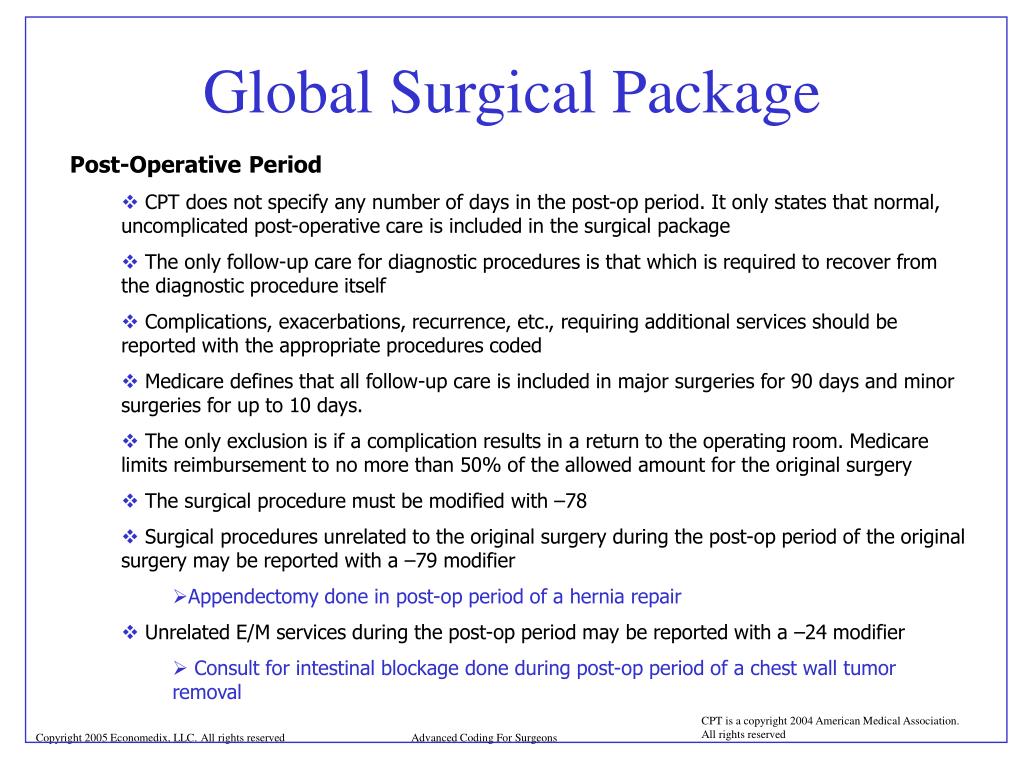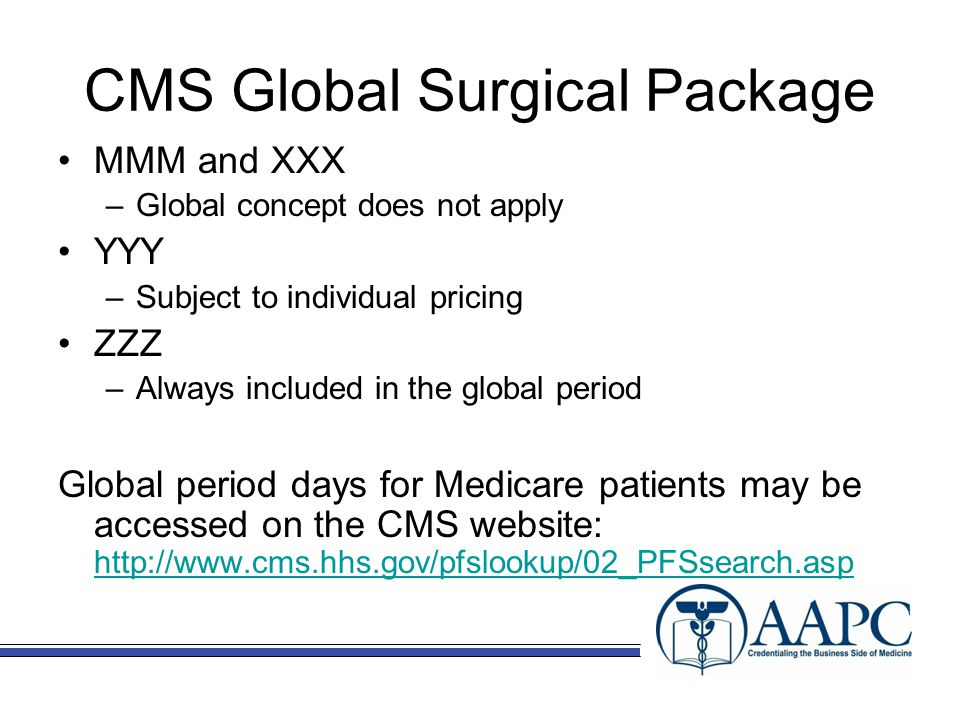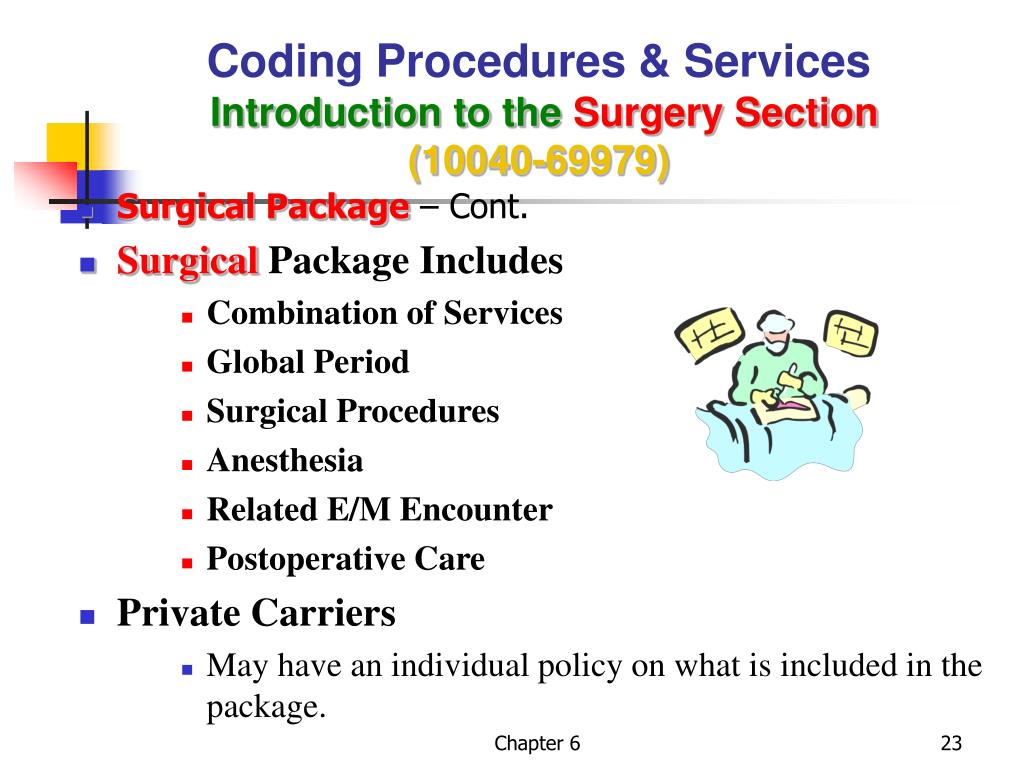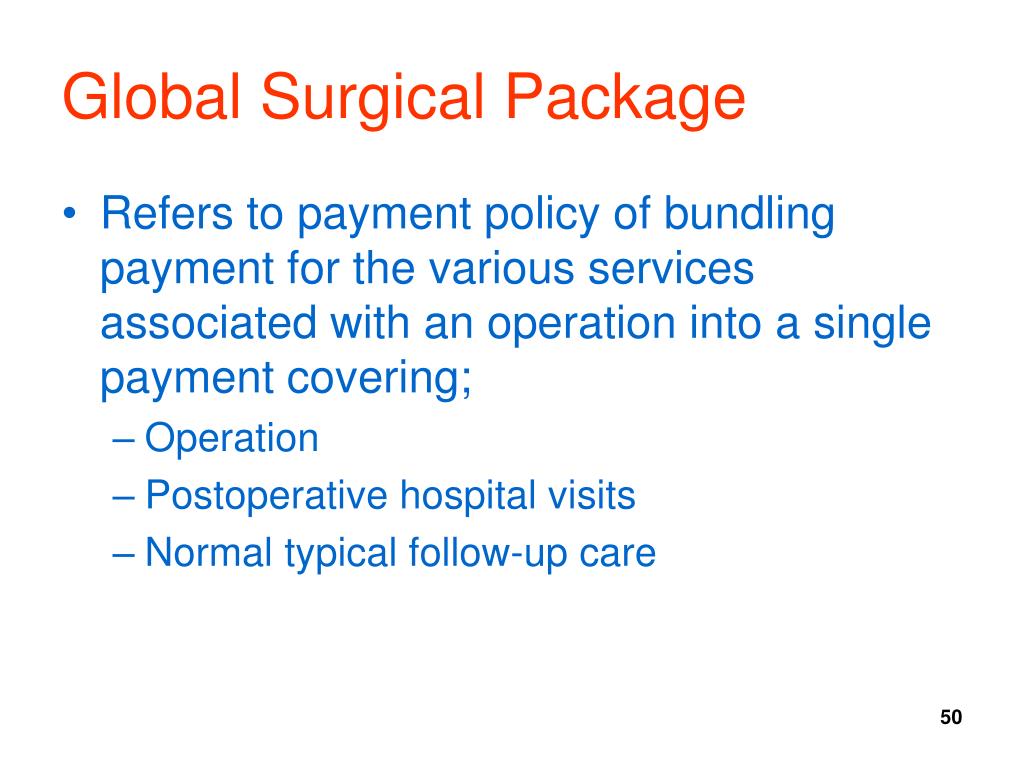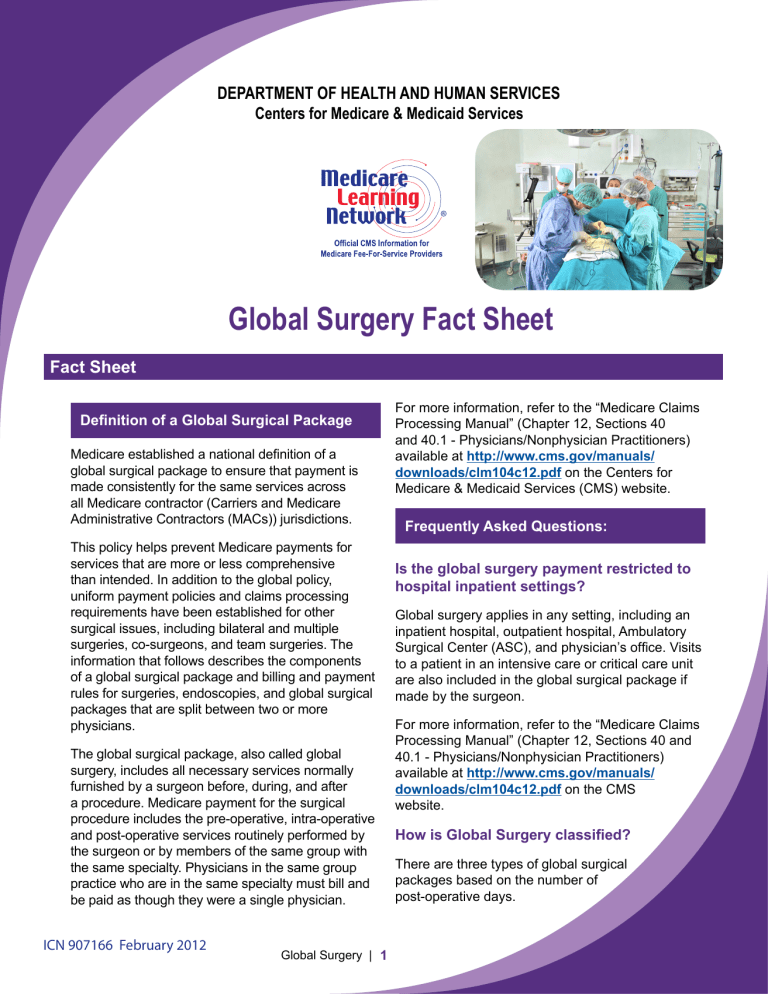What Services Are Included In The Surgical Global Package

Navigating the complexities of healthcare costs can be daunting, especially when facing surgery. The surgical global package, a bundled payment model used by many healthcare providers, aims to simplify billing. However, understanding exactly what services are included within this package is crucial for patients to avoid unexpected expenses.
The surgical global package is a comprehensive payment structure that covers a range of services related to a specific surgical procedure. It essentially groups all the services typically provided during the pre-operative, intra-operative, and post-operative periods into one single payment amount. This contrasts with itemized billing, where each service is billed separately.
What's Typically Included?
The exact components of a surgical global package can vary depending on the payer (insurance company or government program like Medicare), the surgical procedure, and the facility. However, a common set of services are typically included. Understanding these core components is vital for patients planning for surgery.
Pre-operative Services
The pre-operative phase includes services performed before the surgery itself. This typically covers the initial consultation with the surgeon.
It also encompasses the patient's medical evaluation and management performed by the surgeon or their staff before the procedure. These services ensure the patient is a suitable candidate for the surgery.
Diagnostic tests, such as X-rays and lab work, that are directly related to determining the need for the surgery are often included. However, it's important to clarify if more extensive diagnostic testing unrelated to the immediate surgical decision is covered within the package.
Intra-operative Services
This phase covers all services performed during the surgery. This includes the surgeon's fee for performing the operation.
It also includes the costs associated with the operating room, including nursing services. Anesthesia services administered during the surgery are also generally part of the package.
Post-operative Services
The post-operative period is where the global package can sometimes cause confusion. This phase includes routine follow-up care within a specified period after the surgery.
This often extends for 90 days for major surgeries, as defined by Medicare. For minor procedures, this period might be shorter, such as 10 days.
Follow-up visits with the surgeon to monitor healing and address complications are typically included within this timeframe. The management of pain and routine wound care, as administered by the surgical team, falls under the package too.
What's Usually Excluded?
While the global package aims for comprehensiveness, some services are typically excluded. These exclusions can lead to unexpected bills if not understood beforehand.
Services provided by other specialists, such as a cardiologist or physical therapist, are usually billed separately. Treatment for conditions unrelated to the surgery are also excluded from the global package.
If the patient requires a second surgery to address complications arising from the initial procedure, this is generally billed separately. This is especially true if the complication occurs outside the global period.
Importance of Clarification
Given the variations in global package inclusions, proactive communication is key. Patients should directly inquire with their surgeon's office about the specifics of the global package for their procedure.
Confirming with their insurance provider whether the surgical procedure falls under a global package and what the covered services are is crucial. Understanding the global period – the length of time post-surgery covered by the package – is also essential.
Patients should specifically inquire about what services are not included in the package. Medicare provides detailed guidelines on surgical global packages, and these guidelines can be a helpful reference point, even for those with private insurance.
Impact and Considerations
The surgical global package aims to promote efficiency and transparency in healthcare billing. By bundling services, it can simplify the billing process for both patients and providers.
It also encourages coordination of care among different healthcare professionals involved in the surgical process. However, the complexity of inclusions and exclusions can still lead to confusion.
Greater transparency from healthcare providers and insurers is needed to ensure patients fully understand their financial responsibilities. By taking the time to understand the details of the surgical global package, patients can proactively manage their healthcare costs and avoid unexpected financial burdens.

